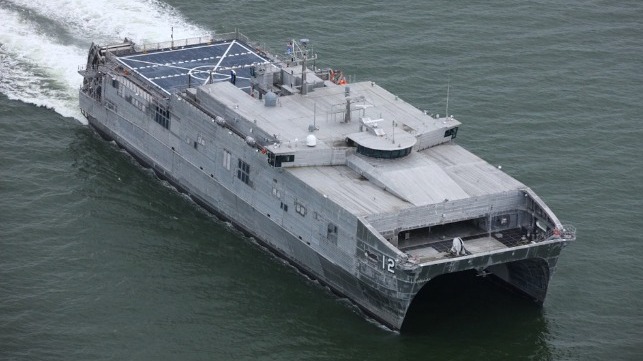Austal's Next Fast Transport Vessel Will Have Autonomous Capability

Austal USA, the aluminum-hull defense shipbuilder known for the Independence-class Littoral Combat Ship, will be installing autonomous capabilities on the latest unit in its series of expeditionary fast transports (EPFs) for the U.S. Navy.
The company has won a $44 million contract modification for the design, procurement, installation and demonstration of an autonomous system aboard EPF 13, the USNS Apalachicola. The vessel is currently under construction at Austal's yard in Alabama, and it will be the 13th of a series of 15.
"Winning a $44 million contract is welcome from a revenue perspective, but strategically this contract award is even more significant for Austal," said Paddy Gregg, CEO of Australia-based Austal Ltd. "Autonomous vessel capability has been identified as an area of strategic importance by the US Navy, so it is promising for Austal that the U.S. Navy has awarded Austal USA [this] contract."
The Spearhead-class EPF is a 340-foot high-speed aluminum catamaran with a 20,000 square foot cargo deck, a medium-lift helicopter deck and seating for 312 embarked troops. It is designed to provide a fast, high-payload transport capability for in-theater operations, and it is unarmed and unarmored. The series is operated by civilian merchant mariners as part of Military Sealift Command's sealift program; an unmanned version, without a vulnerable crew, might have alternative applications for the Navy.
"The evolution of this platform and its deployed performance from humanitarian assistance to operational support brings unmatched value to the warfighter," said Austal USA interim president Rusty Murdaugh. "The potential of the EPF to operate unmanned opens the door to a range of new missions for the EPF ranging from logistics support to mine warfare and strike operations using vertical launch systems (VLS)."

that matters most
Get the latest maritime news delivered to your inbox daily.
Unmanned vessels are a critical part of the Navy's plan to grow its fleet while containing cost and risk. It has been conducting an unclassified test and demonstration program with retrofitted autonomous crewboats, dubbed "Ghost Fleet Overlord," as well as trials with DARPA's Sea Hunter autonomous demonstrator.
One of the vessels in the Ghost Fleet Overlord program recently completed a long-range test voyage of more than 4,400 nautical miles, including a transit of the Panama Canal, in order to evaluate its real-world endurance. The vessel operated in autonomous mode for 98 percent of the voyage, though the transit of the Panama Canal was in manual mode, according to the Navy.
